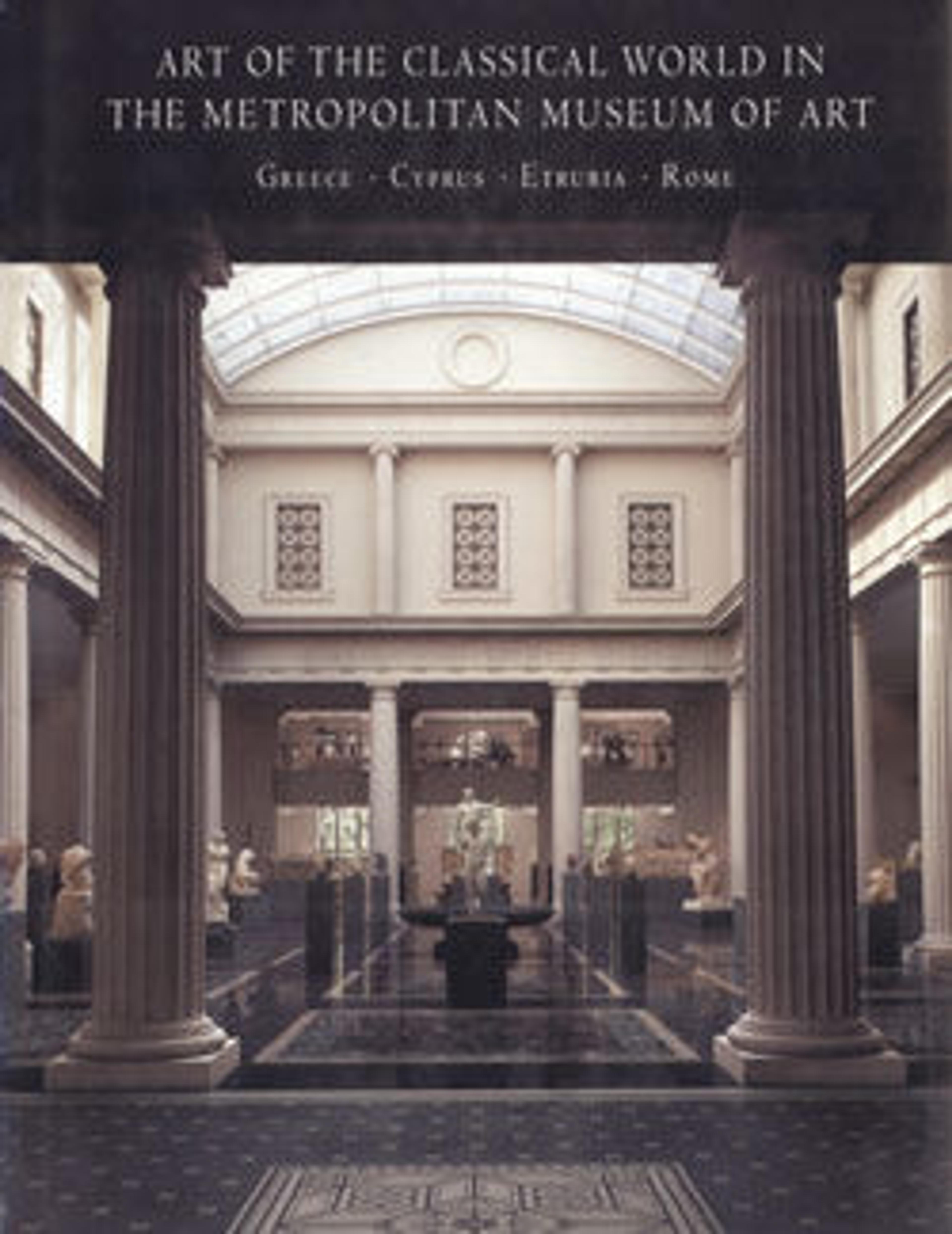Terracotta neck-amphora (storage jar)
During the first half of the seventh century B.C., vase painters in Athens abandoned the abstract geometric tradition in favor of a naturalistic style inspired by art imported from the Near East. On the front of this monumental vase, the hero Herakles strides to the left, sword in hand, grabbing the hair of Nessos, a centaur who had tried to abduct Herakles' wife, Deianeira. The two components of the centaur—horse and man—are not well integrated in this early representation, but the creature shows emotion, pleading for mercy with outstretched hands. Behind Herakles, a four-horse chariot and a driver wait patiently for the outcome of the battle, while a small man attracted by the excitement rushes forward. The scene is depicted with a combination of outline and silhouette enlivened by white and incised lines. A lion attacks a deer on the neck of the vase, and horses graze on the shoulder, but most of the surface is filled with floral motifs and curvilinear decorations. This vase served as a grave marker.
Artwork Details
- Title: Terracotta neck-amphora (storage jar)
- Artist: Attributed to the New York Nessos Painter
- Period: Proto-Attic
- Date: second quarter of the 7th century BCE
- Culture: Greek, Attic
- Medium: Terracotta
- Dimensions: H. 42 3/4 in. (108.6 cm); diameter 22 in. (55.9 cm)
- Classification: Vases
- Credit Line: Rogers Fund, 1911
- Object Number: 11.210.1
- Curatorial Department: Greek and Roman Art
More Artwork
Research Resources
The Met provides unparalleled resources for research and welcomes an international community of students and scholars. The Met's Open Access API is where creators and researchers can connect to the The Met collection. Open Access data and public domain images are available for unrestricted commercial and noncommercial use without permission or fee.
To request images under copyright and other restrictions, please use this Image Request form.
Feedback
We continue to research and examine historical and cultural context for objects in The Met collection. If you have comments or questions about this object record, please contact us using the form below. The Museum looks forward to receiving your comments.
